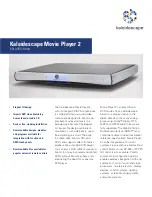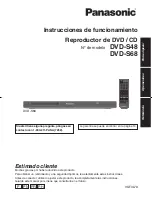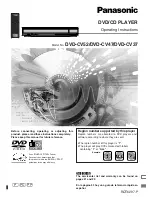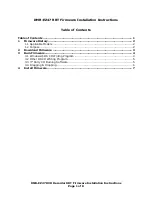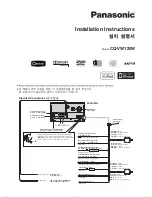
Service Test Programme
GDV 100 D
k
3 - 22
GRUNDIG Service
MUTE MENU
1. Mute on [31a]
2. Mute off [31b]
FOCUS MENU
1. Focus on [41a]
2. Focus off [41b]
DISC MOTOR MENU
1. Disc motor on [59a]
2. Disc motor off [59b]
RADIAL MENU
1. Radial control on [60a]
2. Radial control off [60b]
SLEDGE MENU
1. Sledge inwards [61a]
2. Sledge outwards [61b]
GROOVES MENU
1. Jump grooves to inside [62a]
2. Jump grooves to middle [62b]
3. Jump grooves to outside [62c]
TRAY MENU
1. Open tray [70b]
2. Close tray [70a]
CHECKSUM MENU
1. Checksum EPROM 0.5 [75]
2. Checksum EPROM1 [3]
3. Checksum EPROM2 [4]
4. Checksum FLASH1 [5]
5. Checksum FLASH2 [6]
INTERRUPT MENU
1. Interrupt I2C Controller [7]
2. Interrupt DSM [8]
3. Interrupt DVP [9]
4. Interrupt LSI [66]
UCLOCK MENU
1. uClock A_CLK in CDDA mode [11a]
2. uClock A_CLK in DVD mode [11b]
I2C MENU
1. I2C Controller access [15]
2. I2C NVRAM access [16]
3. I2C Display PWB [17]
4. I2C MCA [69]
5. I2C DENC [19]
S2B MENU
1. S2B echo [20]
2. S2B pass–through [21]
VIDEO SIGNATURE MENU
1. Signature full on [32a]
2. Signature full off [32b]
3. Signature full check [33]
4. Signature LSI on [67a]
5. Signature LSI off [67b]
VIDEO COLOURBAR MENU
1. Colourbar DENC on [36a]
2. Colourbar DENC off [36b]
3. Colourbar DSM on [37a]
4. Colourbar DSM off [37b]
SCART MENU
1. Scart low [57a]
2. Scart medium [57b]
3. Scart high [57c]
3.1.2 Screen layout with menus
When menus are used, no specific screen layout can be given: menu
information will not be in a special format, except for the layout as
mentioned in the previous paragraphs.
A typical menu session can look as follows:
DVD Diagnostic Software version 3.0
Interconnection test passed
Basic Dram test passed
(M)enu, (C)ommand, (S)2B–interface or (D)ownload? [M]:@ M
↵
MAIN MENU
1. Audio –>
2. Basic Functions –>
3. Basic Engine –>
4. Components –>
5. Display PWB –>
6. Log –>
7. Miscellaneous –>
8. Processor & Peripherals –>
9. Video –>
Select> 8
↵
PROCESSOR AND PERIPHERALS MENU
1. Checksum –>
2. Interrupt –>
3. uClock –>
4. DRAM Write/Read
5. Flash Write Access
6. I2C –>
7. S2B –>
8. NVRAM Write/Read
Select> 6
↵
Depending on the height of the screen, the text will start scrolling off the
top of the screen.
3.2 Operating variant (C)ommand
The Operating variant (C)ommand is part of level 1 diagnostic mode.
The commands that can be given are the names or the numbers of the
Service Test Level (point 4). A command must be terminated with a
<return> character from the control PC. When typing commands, the
backspace key can be used to make corrections.
In case of typing errors in the command, an error message is returned.
Example:
DD>
222
↵
0001 Unknown command ER @
DD>
If the command is recognised, the command is executed. Result and
output of an activated (and terminated) command will be sent back to
the control PC according to the standard layout (point 3.3).
Example in case the DVD-Player is correct:
DD>
22
↵
0000 OK @
DD>
Example in case the DVD-Player is faulty:
DD>
22
↵
1601 Data line X is not connected to the DSM/DVP ER @
DD>
3.3 Service Test Results
Results returned from a Service Test Level to the control/service PC
will have a maximum length of 160 characters and are terminated by
a CR character (included in the string length)
The result has the following layout
<number> <string> [OK | ER] @ <CR>
<number> is a 4 digits decimal number padded with leading zeros if
value is less the 4 digits. The first two digits identify the generating
Service Test Level (or goup of Levels), the latter two digits indicate the
error number.
<string> is text string containing information about the result of the
Service Test Level.
<number> and <string> are defined in the output sections of each
Service Test Level. See description of Service Test Level in
point 4.































